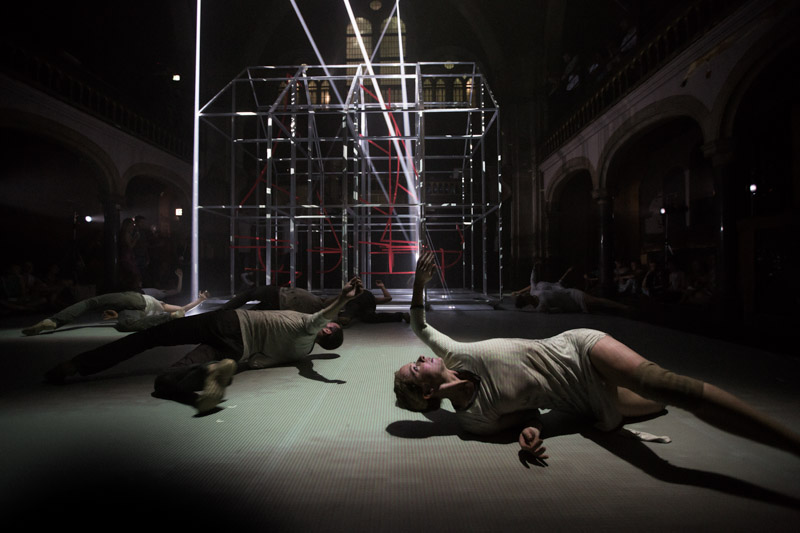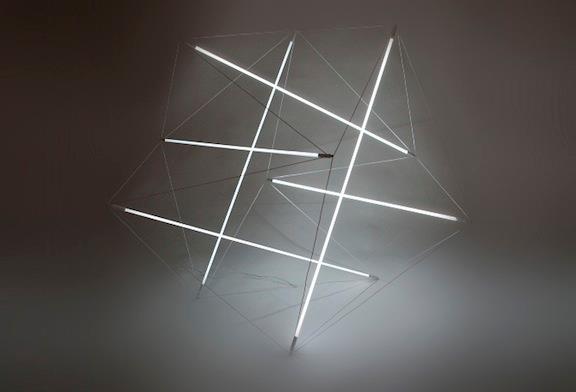lights
The tensegrity space frame light is comprised of a four strut lamp module whose geometry is the derivative of a cube. It affords a stable platonic structure with the ability to orthogonally tessellate in the x,y.z axes without change to its orientation to produce generic architectural elements such as: columns, roofs, walls and beams. Because tensegrity yields a system of structural correlation, moment force is eliminated and makes way for a high strength to weight ratio; as the system’s surface area increases, to a greater extent so too does its rigidity, allowing for generous spans and cantilevers. When arrayed, each consecutive module is pinned to the latter using its lamp connector to fasten to the mid point of an adjacent electrical tendon. The uniform array produces two distinct patterns of lamp and lattice. Where the lamps produce a luminous weave that at times resembles an orthogonal grid of offset lines, the lattice generates a sequential pattern of two distinct squares rotated at 45 degrees, one four times the size of the other.








